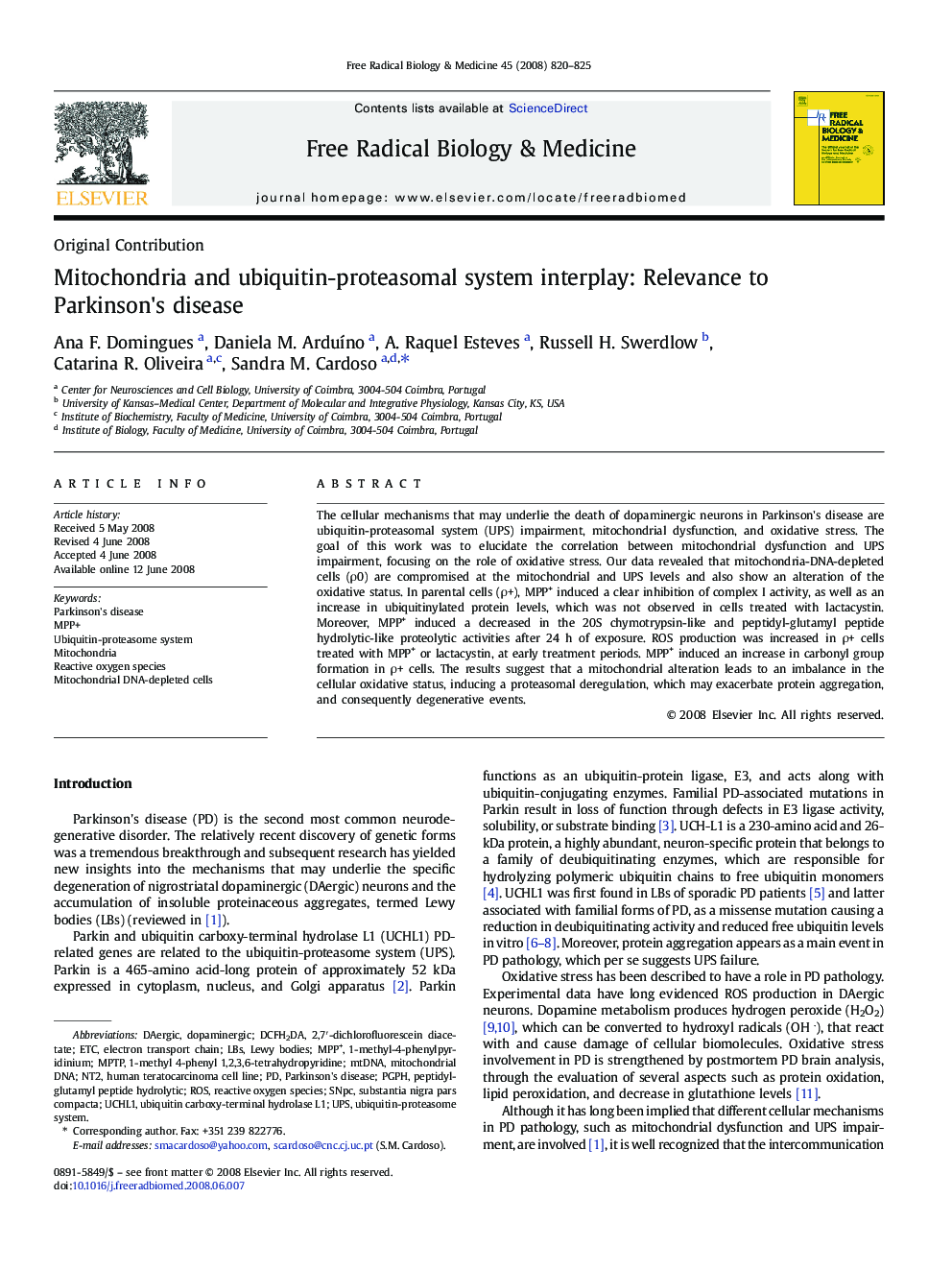| Article ID | Journal | Published Year | Pages | File Type |
|---|---|---|---|---|
| 1910679 | Free Radical Biology and Medicine | 2008 | 6 Pages |
The cellular mechanisms that may underlie the death of dopaminergic neurons in Parkinson's disease are ubiquitin-proteasomal system (UPS) impairment, mitochondrial dysfunction, and oxidative stress. The goal of this work was to elucidate the correlation between mitochondrial dysfunction and UPS impairment, focusing on the role of oxidative stress. Our data revealed that mitochondria-DNA-depleted cells (ρ0) are compromised at the mitochondrial and UPS levels and also show an alteration of the oxidative status. In parental cells (ρ+), MPP+ induced a clear inhibition of complex I activity, as well as an increase in ubiquitinylated protein levels, which was not observed in cells treated with lactacystin. Moreover, MPP+ induced a decreased in the 20S chymotrypsin-like and peptidyl-glutamyl peptide hydrolytic-like proteolytic activities after 24 h of exposure. ROS production was increased in ρ+ cells treated with MPP+ or lactacystin, at early treatment periods. MPP+ induced an increase in carbonyl group formation in ρ+ cells. The results suggest that a mitochondrial alteration leads to an imbalance in the cellular oxidative status, inducing a proteasomal deregulation, which may exacerbate protein aggregation, and consequently degenerative events.
